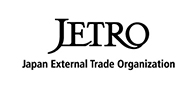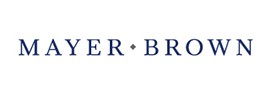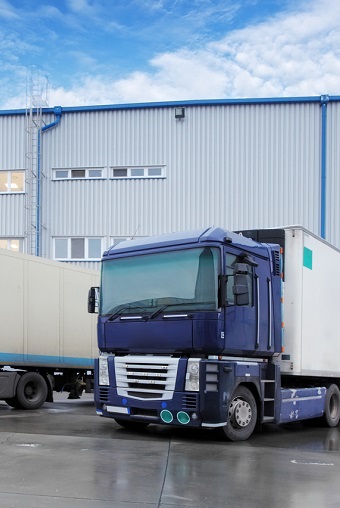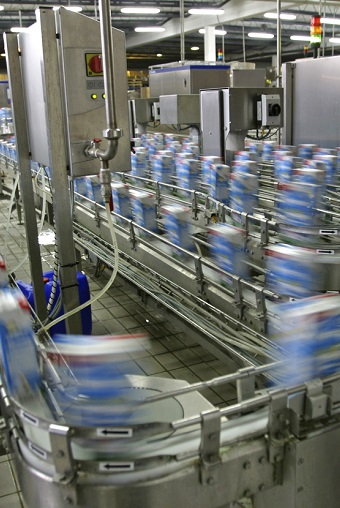Travel, Airline, Hotel & Tourism Industry Market Research
Competitive Intelligence, Business Analysis, Forecasts, Market Size, Trends, Companies, Statistics
Available Data Services: Custom Research Projects, Database Subsription or PDF eBooks
PLUNKETT PROVIDES IN-DEPTH STATISTICS TABLES COVERING THE FOLLOWING INDUSTRY TOPICS:
-
Airline, Hotel & Travel Industry Statistics and Market Size Overview
-
Consolidation in the U.S. Passenger Airlines Industry
-
Consolidation in U.S. Airlines
-
International Visitor Arrivals to the U.S., Forecast: 2017-2023
-
International Visitor Arrivals to the U.S.: Selected Years, 2000-2015
-
Quarterly U.S. Scheduled Service Passenger Airlines Financial Reports: 3rd Quarter 2019-3rd Quarter 2020
-
Top Regions of U.S. Residents Traveling Abroad (Outbound): 2021-2022
-
U.S. Aviation Industry Average Annual Percentage Growth Forecasts by World Region: 2019-2039
-
Top 20 Countries Ranked by International Tourism, Number of Arrivals: 2010-2017
-
Domestic Airline Jet Fuel Prices, U.S.: January 1986-October 2015
-
Air Carrier Traffic Statistics, U.S.: 2000-July 2023
-
Total Scheduled U.S. International Passenger Traffic, U.S. Commercial Air Carriers: 2010-2040
-
Air Carrier Traffic Statistics, U.S.: 12 Months Ended May 2019 and June 2018
-
Cruise Line Industry Overview, U.S.: 2016-2022
-
U.S. Airline Passenger Activity: 2010-2043
-
Quarterly Growth in Real Tourism Spending & Real GDP, U.S.: 2000-2017
-
U.S. Airline Revenue Passenger Enplanements: January 1996-May 2019
-
Amtrak Ridership: January 1991-September 2015
-
Annual U.S. Domestic Average Itinerary Air Fare: 1995-Q1 2019
-
Monthly U.S. Transportation Services Index (TSI) : November 2019-March 2020
-
Estimated U.S. Accommodation Sector Quarterly Revenues: 2020-4th Quarter 2022
-
Rail Passenger Capacity Utilization, U.S.: January 2003-August 2015
-
Top 10 U.S. Airlines & Airports Ranked by 2023 System* Scheduled Enplanements
-
Employment in the Airline, Hotel & Travel Industry, U.S.: 2017-June 2023
-
Highway Vehicle Miles Traveled, U.S., Monthly: January 1990-September 2015
-
Transportation Services Index, U.S.: January 2000-September 2015
-
U.S. Airline Revenue Passenger Enplanements: January 1996-October 2016
-
Percent Change in the U.S. Transportation Services Index (TSI) from Year-to-Year: 2005-2016
-
Consolidation in U.S. Airlines
-
Monthly U.S. Transportation Services Index (TSI): October 2017-April 2018
-
Percent Change in the U.S. Transportation Services Index (TSI) from Year-to-Year: 2006-2016
Top Companies Profiled
The following is a partial listing for this industry. As a subscriber, you will have access to the leading companies and top growth companies. This includes publicly-held, private, subsidiary and joint venture companies, on a global basis as well as in the U.S.
Hundreds of Top Companies Profiled, Including:
PLUNKETT PROVIDES UNIQUE ANALYSIS OF THE FOLLOWING TRENDS THAT ARE DRIVING THIS INDUSTRY:
-
Introduction to the Travel Industry
-
Discount Airlines Compete with Legacy Airlines, but the Differences Are Beginning to Blur
-
The Coronavirus’ Effect on the Airline, Hotel & Travel Industry
-
Major Airlines Change Strategy, Charge Fees and Boost Profits
-
Some International Airlines Cut First Class Seats and Add to Business Class/Premium Economy Now Widely Available
-
ADS-B Improves Air Traffic Control
-
Private Jet Rentals Grow in the Form of Memberships and Fractional Shares
-
Boeing and Airbus Enjoy Boom in Orders/Major Aircraft Market in China
-
New Aircraft Designs Offer Greater Passenger Comfort/More Efficient Engines
-
Supersonic Jets Fly Again
-
Electric-Powered Airplanes are Under Research and Development
-
In Flight Wireless Takes Off
-
Air Traffic Grows/Airports Expand/ Middle East and Asia Have Strong Air Traffic
-
China Makes Immense Investments in Railroads, Highways & Airports
-
Massive, Long Term Growth in China’s Travel Market/Indian Travel Market Rebounds
-
Online Travel Agencies (OTAs) Continue Strong Growth in Bookings/Hotels Fight to Keep Control of the Customer
-
Sustainable Tourism and Ecotourism Grow as Certification Standards Emerge
-
Hotel Market Booms/Luxury Chains Expand While Pod Rooms and Hostels Grow in Popularity
-
Luxury Hotel Chains Expand Globally
-
Loyalty Programs Battle for Members at Restaurants, Hotel Chains and Airlines/Compete with Online Travel Agencies
-
What Millennials and Mobile-Savvy Consumers Want as Tourists and Travelers
-
Hotels Target Young Customers with Strategies Ranging from Micro Rooms and Hostels, to Hip Hotels that Encourage Mingling
-
Hotels Adopt Smartphones and In-Room Tablets to Deliver Services, Speed Check-In and Replace Room Keys
-
Localization will Drive Hotel Features, Marketing
-
Dog-Friendly Hotels Will Gain Market Share
-
“Sharing Economy” Gains Market Share in Travel with Online Sites Like Airbnb, HomeAway and Many Global Competitors
-
Hotel Mergers Enable Chains to Claim Market Share, Add Unique Properties
-
Cruise Industry Market Is Strong while Capacity Soars with New Ships
-
Small Cruise Ships Offer Adventure, Luxury, Intimacy or Access to More Places
-
River Cruise Lines Are Launched, with Low Capital Investment and High Fares
-
Chinese Tourism Creates Growth Opportunities for the Cruise and Hotel Industries
-
New Technologies Show Promise for Port and Airport Security
-
High-Speed Passenger Trains, Including Maglev, Advance in China and Europe
-
U.S. Passenger Train Projects Receive Funding, including Amtrak and Light Rail
-
Aging Baby Boomers Will Cause Significant Changes in the Leisure Sector, Including Sports and Activity-Based Travel
-
The Future of Travel
-
Self-Check-In Kiosks, RFID and Wireless Technologies Save Costs and Enhance Travelers’ Experience at Airlines and Hotels
-
Private Space Vehicles Begin to Fly, Including the SpaceShipTwo, but 2014 Crash May Slow Development
-
Nano Spacecraft Under Development
Key Findings:
A complete market research report, including forecasts and market estimates, technologies analysis and developments at innovative firms within the Airline, Hotel & Travel Industry. Gain vital insights that can help shape strategy for business development, product development and investments.
Key Features:
- Business trends analysis
- In-depth industry overview
- Technology trends analysis
- Forecasts
- Spending, investment, and consumption discussions
- In-depth industry statistics and metrics
- Industry employment numbers
Additional Key Features Include:
Industry Glossary
Industry Contacts list, including Professional Societies and Industry Associations
Profiles of industry-leading companies
- U.S. and Global Firms
- Publicly held, Private and Subsidiaries
- Executive Contacts
- Revenues
- For Public Companies: Detailed Financial Summaries
Pages: 450
Statistical Tables Provided: 9
Companies Profiled: 300
Geographic Focus: Global
Price: $399.99
Key Questions Answered Include:
- How is the industry evolving?
- How is the industry being shaped by new technologies?
- How is demand growing in emerging markets and mature economies?
- What is the size of the market now and in the future?
- What are the financial results of the leading companies?
- What are the names and titles of top executives?
- What are the top companies and what are their revenues?
This feature-rich report covers competitive intelligence, market research and business analysis—everything you need to know about the Airline, Hotel & Travel Industry.
Plunkett Research Provides Unique Analysis of the Following Major Trends Affecting the Airline, Hotel & Travel Industry
- Introduction to the Travel Industry
- Discount Airlines Compete with Legacy Airlines, but the Differences Are Beginning to Blur
- Major Airlines Change Strategy, Charge Fees
- Some International Airlines Cut First-Class Seats and Add to Business Class/Premium Economy Now Widely Available
- Private Jet Sharing and Rentals Are Big Business/Semi-Private Airlines Compete
- Boeing and Airbus Compete for New Orders
- New Aircraft Designs Offer Greater Passenger Comfort/More Efficient Engines
- Supersonic Jets Fly Again
- Hydrogen and Electric Powered Airplanes Are Under Research and Development
- Airports Expand
- China Makes Immense Investments in Railroads, Highways, Airports & Silk Road
- Online Travel Agencies (OTAs)/Hotels Fight to Keep Control of the Customer
- Ecotourism, Sustainable Tourism, Adventure Tourism and Volunteerism Gained Popularity as Certification Standards Emerge
- Luxury Hotel Chains Expanded Globally
- What Millennials and Mobile-Savvy Consumers Want as Tourists and Travelers
- Hotels Target Young Customers with Strategies Ranging from Micro Rooms and Hostels, to Hip Hotels that Encourage Mingling to Fitness Options
- Hotels Adopt Smartphones and In-Room Tablets to Deliver Services, Speed Check-In and Replace Room Keys
- Localization Will Drive Hotel Features, Marketing
- Dog-Friendly Hotels Will Gain Market Share
- Sharing Economy Gains Market Share in Travel with Online Sites Like Airbnb, Vrbo and Many Global Competitors
- Cruise Industry Rebuilds After the Coronavirus
- Small Cruise Ships Feature Adventure, Luxury, Intimacy or Access to More Places
- River Cruise Lines Launched with Low Capital Investment and High Fares
- Chinese Tourism Will Create Growth Opportunities for the Cruise and Hotel Industries
- New Technologies Show Promise for Port and Airport Security
- High Speed Passenger Trains, Including Maglev, Advance in China and Europe
- U.S. Passenger Train Projects Receive Funding, Including Light Rail and All Aboard Florida
- Aging Baby Boomers Will Cause Significant Changes in the Leisure Sector, Including Sports and Activity-Based Travel
- The Future of Travel
Plunkett Research Provides In-Depth Tables for the Following Airline, Hotel & Travel Industry Statistics
- Airline, Hotel & Travel Industry Statistics and Market Size Overview
- Air Carrier Traffic Statistics, U.S.: 1997-April 2023
- Consolidation in U.S. Airlines
- U.S. Airline Passenger Activity: 2010-2043
- Top Regions of U.S. Residents Traveling Abroad (Outbound): 2021-2022
- Top 10 U.S. Airlines & Airports Ranked by 2023 System Scheduled Enplanements
- Cruise Line Industry Overview, U.S.: 2016-2022
- Estimated U.S. Accommodation Sector Quarterly Revenues: 2020-4th Quarter 2022
- Employment in the Airline, Hotel & Travel Industry, U.S.: 2017-June 2023



















